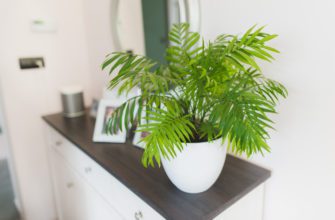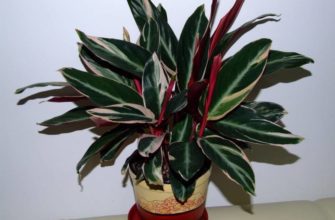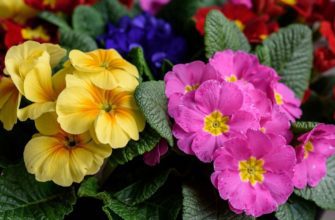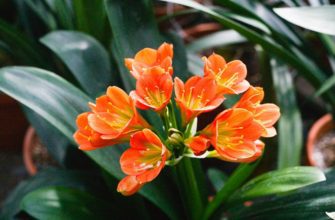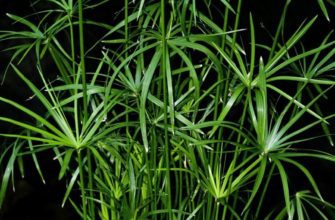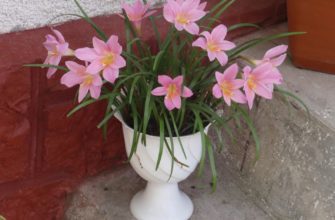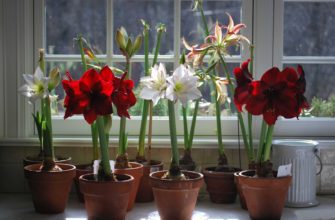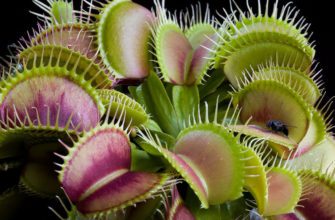The indoor flower peperomia is one of the popular plants that attract attention with its elegant greenery and unique leaves. This plant species belongs to the nightshade family. It is known for its diversity of species and attractive flowering. In this text, we will dive into the world of peperomia and consider the diversity of its species, varieties, as well as the main aspects of caring for it at home.
Peperomia, also known as pepperoni or cane peperomia, boasts a variety of leaf shapes and colors. From smooth and shiny to wavy and hairy, the plant's leaves come in a variety of greens, from rich to pastel, as well as some interesting patterns and stripes. The combination of these factors makes each peperomia unique and an attractive indoor gardening item.
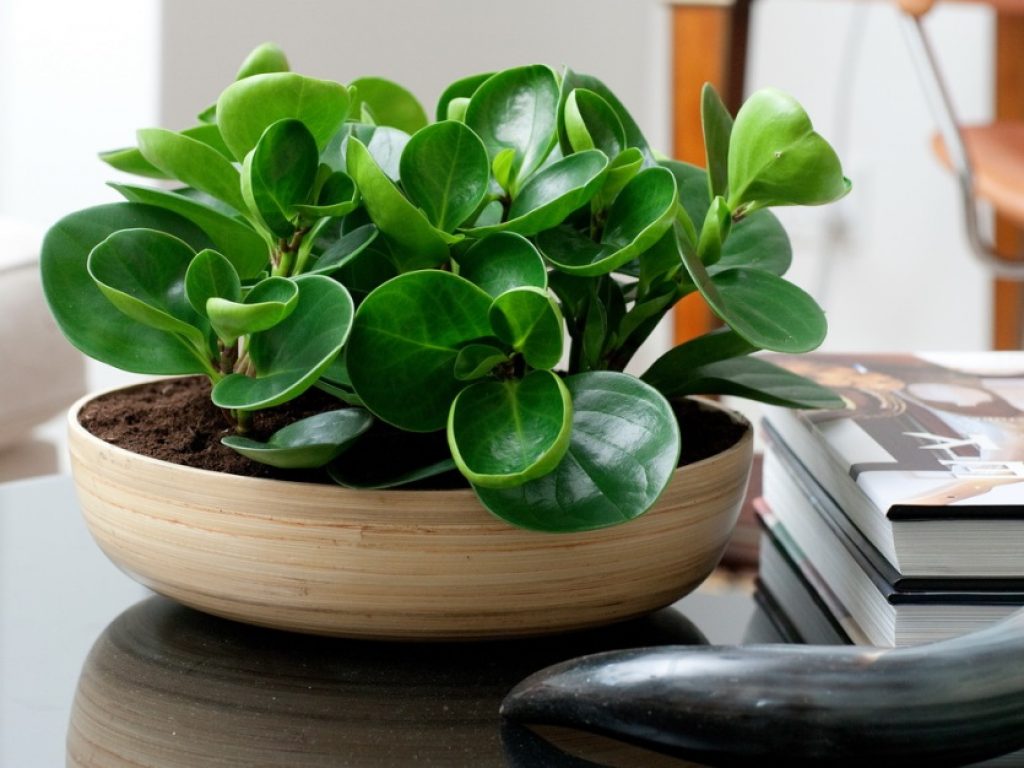
Peperomia: Main characteristics
Peperomia is a genus of plants in the family Piperaceae, which includes about 1,500 species distributed in tropical and subtropical regions around the world. Peperomias are popular houseplants due to their attractive foliage, variety of shapes and colors.
Main characteristics of peperomia:
- Foliage: Peperomias have a variety of foliage, including different shapes, textures, and shades of green. Some species have small, thick, fleshy leaves, while others are large and glossy. Leaves can be colored in different shades of green, from light green to dark green, and may also be striped, spotted, or speckled in other colors, including white, cream, and silver.
- Size: Peperomia sizes can vary considerably. Some species are small and compact and can reach only a few centimeters in height, making them ideal for miniature gardens and terrariums. At the same time, other species can grow up to 30 centimeters or more.
- Reproduction: Peperomias are propagated both by seeds and vegetatively. They can be propagated by cuttings, leaf blades or by dividing the plant. Propagation by cuttings is the most common method, and in some species of Peperomia new plants can easily arise on leaves that have touched the soil.
- Care: Peperomias are generally unpretentious and easy to care for. They prefer bright but diffused lighting, ideal for placement in rooms with limited access to direct sunlight. Plants need to be watered moderately, maintaining constant soil moisture, but avoiding over-watering. It is also recommended to periodically wipe the leaves to remove dust and promote better breathing of the plant.
- Decorative use: Peperomias are widely used in home gardening and decor due to their attractive foliage. They can be grown as independent plants in pots or containers, and also used in compositions with other indoor plants. Their variety of shapes and colors make them an excellent choice for creating interesting combinations and landscaping various rooms.
Peperomia is a diverse genus of plants with attractive foliage, various shapes and colors. They are easy to care for and are great for home gardening, adding charm and beauty to any room.
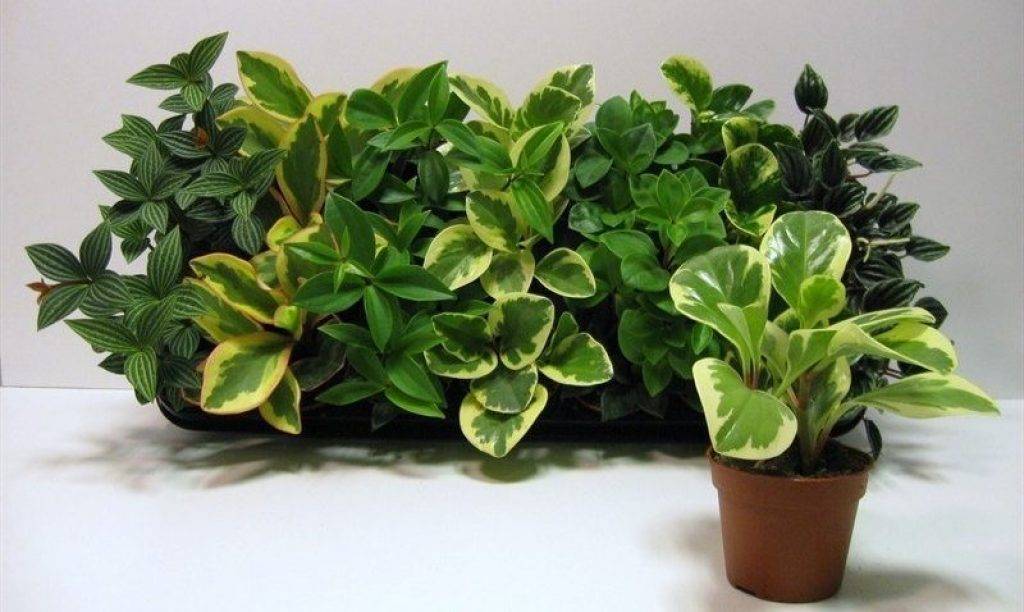
Peperomia varieties
Peperomia is a plant that is popular among gardeners and flower growers due to its beauty and versatility. There are over 1,000 different species of peperomia.
Each of them has its own unique coloring, leaf shape and size, as well as properties that make them ideal for any interior design or landscape design.
Among the most common types of peperomia, the following can be distinguished:
- Peperomia capitellatum (Peperomia capitate) is a perennial evergreen plant with round and bright green heart-shaped leaves. It reaches up to 40 cm in height and has small flowers.
- Peperomia rubella (Peperomia rubella) is a plant with small, serrated leaves that are green with a red base. It grows slowly but is easy to care for, making it a great choice for interior design.
- Peperomia marble (Peperomia marble) is a plant with broad and fleshy leaves that have a marbled color with light spots. It has a low growth and requires good lighting.
- Peperomia ferruginosa (Peperomia ferreyrae) is a plant with small leaves that are green with a thin white edge. It has strong vertical stems and fast growth, making it a great choice for vertical gardens.
- Peperomia argyrea (Peperomia argyreia) is a plant with heart-shaped leaves that are silvery in color with a green center. This bushy plant has a dense growth habit and responds well to abundant watering.
- Peperomia mesozoicum (Peperomia obtusifolia) is a semi-shrub that reaches 20-30 cm in height and has glossy round leaves. The flowers are small with white bristles.
- Peperomia small (Peperomia puteolata) is a plant with small, glossy, dark green leaves that have bright green veins. It responds well to light and grows quickly with proper care.
Each type of peperomia has its own advantages, and the right choice depends on the final goals and the way the plant is used. In any case, all varieties of peperomia are a wonderful representative of the green kingdom, which gives freshness, beauty and harmony to any space.
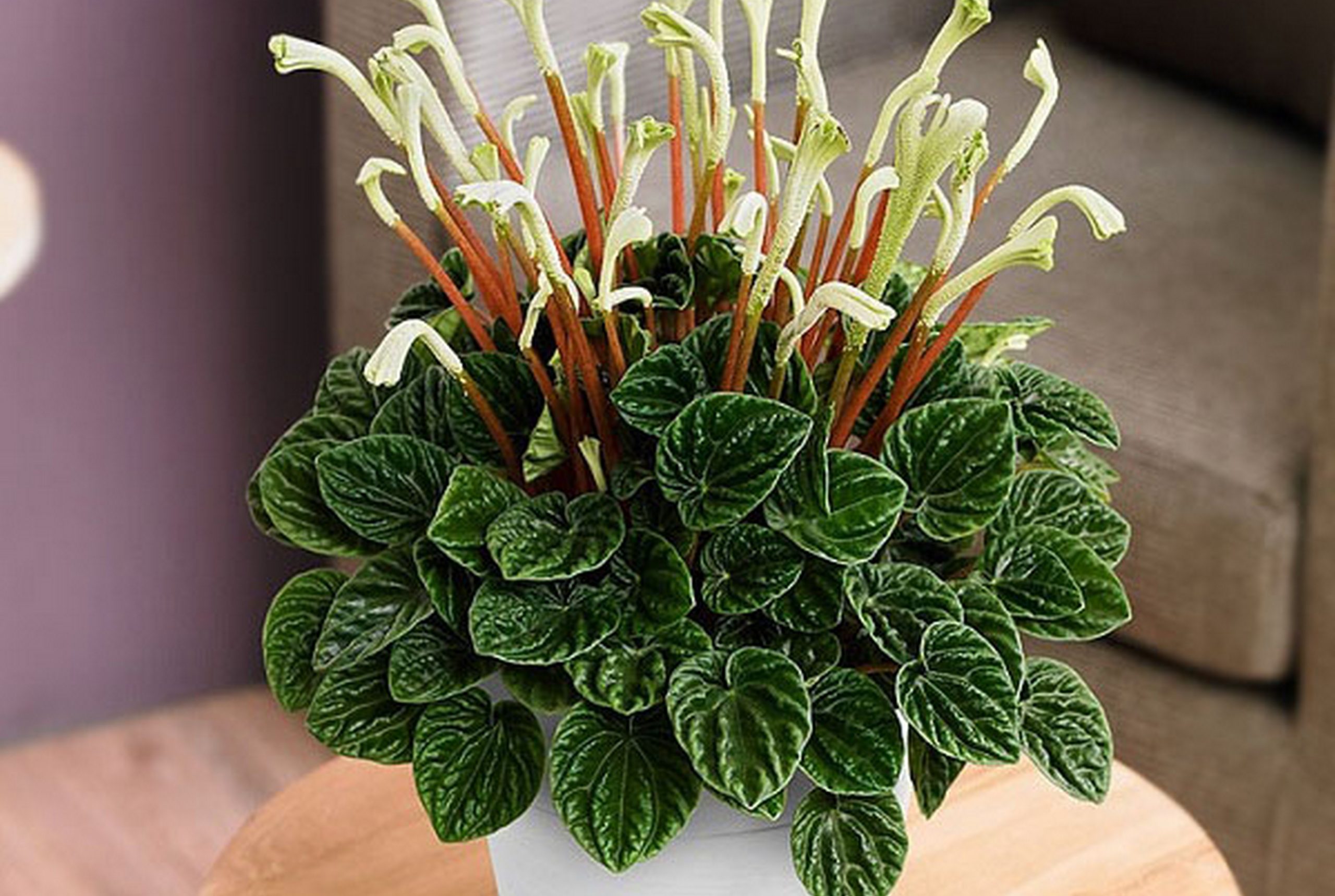
Peperomia care at home
Caring for peperomia at home includes several important aspects that will help ensure healthy growth and development of the plant. Here are some basic recommendations for successful care of peperomia:
- Lighting: Peperomias prefer bright but diffused light. Place the plant in a room where it receives enough light, but not direct sunlight. A window facing east or west is the ideal place for peperomia. If there is not enough light, it is recommended to use artificial lighting, such as phytolamps, to provide the necessary brightness.
- Temperature: Peperomias prefer a warm environment. They thrive in temperatures between 18 and 24 degrees Celsius during the day and 15 to 18 degrees Celsius at night. Avoid sudden temperature changes and do not place the plant near air conditioners or heaters.
- Watering: Peperomias require moderate watering. Allow the soil to dry out slightly between waterings to avoid excess moisture, which can cause root rot. It is important not to overwater the soil, but also not to let it dry out to the extreme. Check the soil moisture by feeling the top layer or using a moisture meter.
- Humidity: The indoor Peperomia plant grows well in normal home humidity, but will benefit from increased humidity. You can increase the humidity around the plant by misting the foliage or placing it on a stand with damp gravel or moss. This is especially helpful in dry climates or when using central heating.
- Top dressing: Peperomias do not require much feeding, but fertilizing can help them grow and stay healthy. Use a general-purpose liquid houseplant fertilizer diluted to half the recommended strength. Feed the plant once a month during the active growth period (spring and summer) and reduce feeding during the dormant period (fall and winter).
- Transfer: The indoor plant peperomia rarely requires frequent repotting. Repot the plant only when necessary, when the roots become cramped in the current pot or the soil is overloaded with nutrients. Use well-drained soil consisting of a mixture of peat soil, perlite and sand. Repot the plant in a slightly larger pot and provide a good drainage system.
By following these basic care guidelines, you can create optimal conditions for your Peperomia to grow and thrive indoors. Remember that different Peperomia species may have different care requirements, so it’s always a good idea to research the specific requirements of the plant.
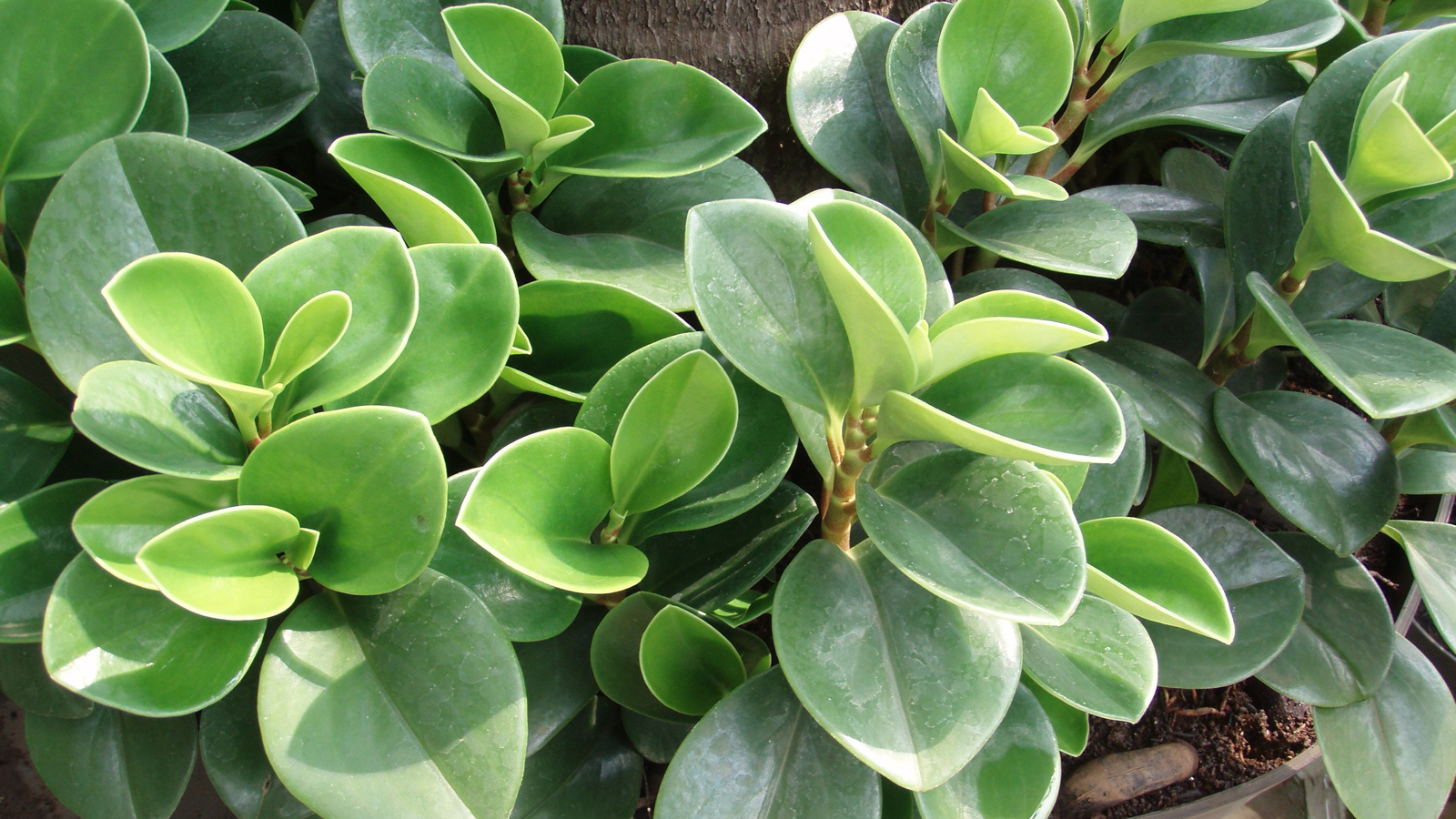
Peperomia flowering features
Peperomia is an ornamental plant with unusual and beautiful leaves of various shapes and colors, which are the main attractive feature of this plant. But with proper care and maintenance conditions, peperomia can also please its owners with abundant flowering.
When flowering, peperomia produces small flowers on long stems. The flowers can be white, green, pink or red and have a delicate, faint scent. Flowering usually occurs during the summer and can continue into the fall.
However, it is worth noting that flowering is not the main feature of peperomia. In most cases, peperomia flowering is not very abundant, since the plant is focused on the development of beautiful leaves.
In addition, some Peperomia species, such as Peperomia capitellatum or Peperomia rubella, do not bloom at all. However, if you want your Peperomia to bloom more often, there are some steps you can take.
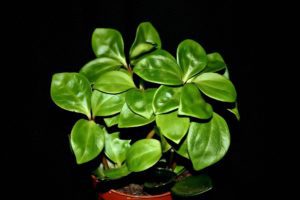 Peperomia flowering can be stimulated, for example, by reducing the amount of light it receives. This can be done, for example, by lowering the plant in the window or moving it to a shadier place.
Peperomia flowering can be stimulated, for example, by reducing the amount of light it receives. This can be done, for example, by lowering the plant in the window or moving it to a shadier place.
It is also important to remember that for beautiful flowering, peperomia requires proper care and regular watering, as well as fertilization. To fertilize peperomia, you can use special fertilizers for flowering plants, which will enrich the soil with essential nutrients and help stimulate growth and flowering.
In general, although the flowering of peperomia is not its main feature, it can be a pleasant bonus for the owners of this beautiful plant. In order for peperomia to please you with its flowering, it is enough to follow the correct care and create optimal conditions for maintenance.
Duration and nature of flowering of peperomia
The duration and nature of Peperomia blooms can vary depending on the specific species of plant. Some Peperomia species are known for their attractive blooms, while others may have less noticeable blooms or may not bloom at all.
Here are some general characteristics of Peperomia flowering:
- Flowering period: Peperomia blooms typically last for several weeks, although the exact duration can vary depending on the species and growing conditions. Some species may bloom once a year, while others may bloom several times during the season.
- Types of flowers: Peperomia flowers are usually small and come in a variety of shapes and colors. Some species produce racemes or spikes of many small flowers, while other species produce single flowers or clusters of flowers. Peperomia flowers come in a variety of colors, including white, cream, yellow, pink, or red.
- Aroma: Some Peperomia species may have a slight scent in their flowers. The scents may be light and floral, but are often not strong or intense. However, not all Peperomia species are scented, and many do not have a noticeable scent.
- Conditions for flowering: To ensure successful flowering of peperomia, it is necessary to create certain conditions. Optimal lighting is a key factor. Indoor peperomia flower usually thrives in bright but diffused light, it should avoid direct sunlight, which can cause leaf burns. It is also important to maintain stable temperature conditions and provide the plant with sufficient nutrition.
Description of Peperomia as a Houseplant
Peperomia is one of the most popular indoor plants, which is distinguished by its unusual leaves and relatively low maintenance requirements. The plant has many varieties with different colors and shapes of leaves.
The leaves can be green, silver, golden, dark green, with white or pink patterns, depending on the variety. The shape of the leaves can also vary from round and heart-shaped to narrow and oval. The total number of Peperomia species exceeds 1000, and at the same time, this is only a part of what is known about these plants.
The relatively small size of peperomia, usually no more than 30-50 cm in height, makes it ideal for growing as a houseplant. This plant is easy to trim and shape the bushes, which makes it universal for interior decoration and creating compositions with other houseplants.
One of the main advantages of peperomia as a houseplant is its relatively low need for water and light. The plant can survive in low light and several days without watering, making it ideal for those who are often away from home or forget to water their plants.
However, it is worth noting that to achieve the best results and maintain the beauty of the leaves, peperomia needs sufficient light and regular watering. Reproduction of peperomia is possible in different ways: cuttings, dividing the bush and sowing seeds.
The propagation process depends on the variety of Peperomia and the method chosen. Like many houseplants, Peperomia is also useful as an air purifier. The plant is able to absorb harmful chemical compounds in the air and return it clean and fresh.
Overall, Peperomia is a great houseplant for those looking for a beautiful, versatile, and easy-to-grow plant that can complement the decor and purify the air in the home.

